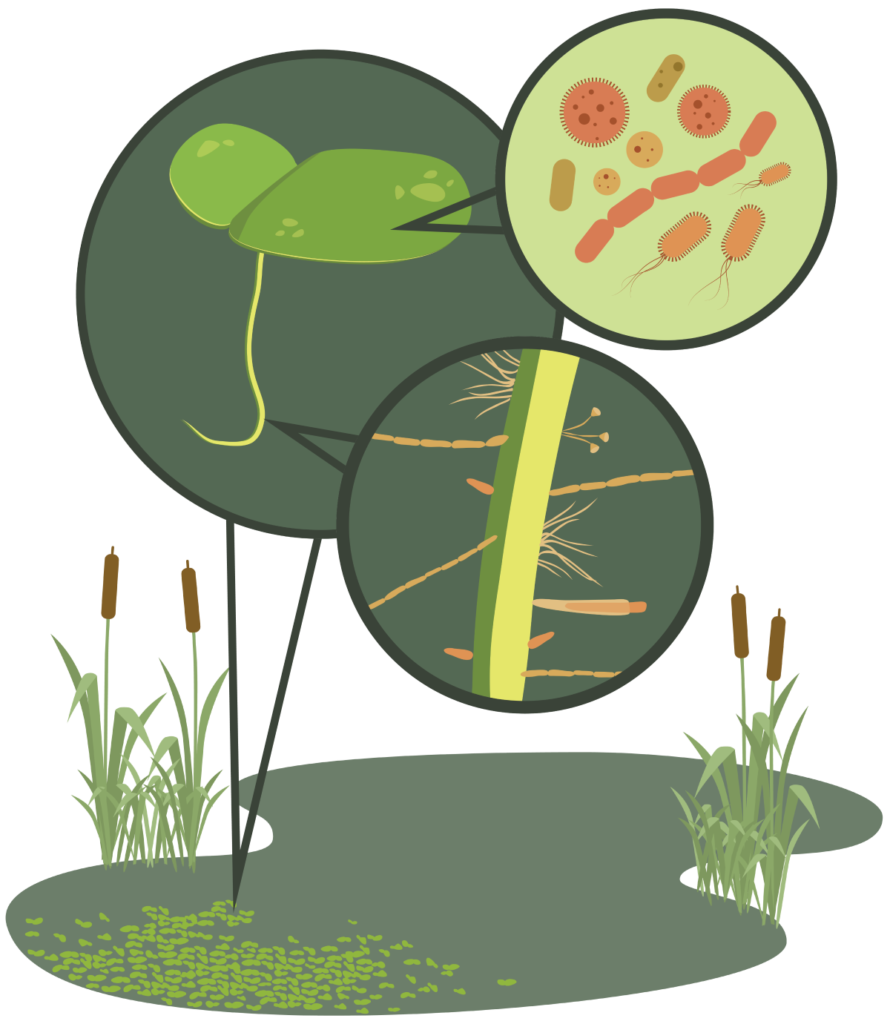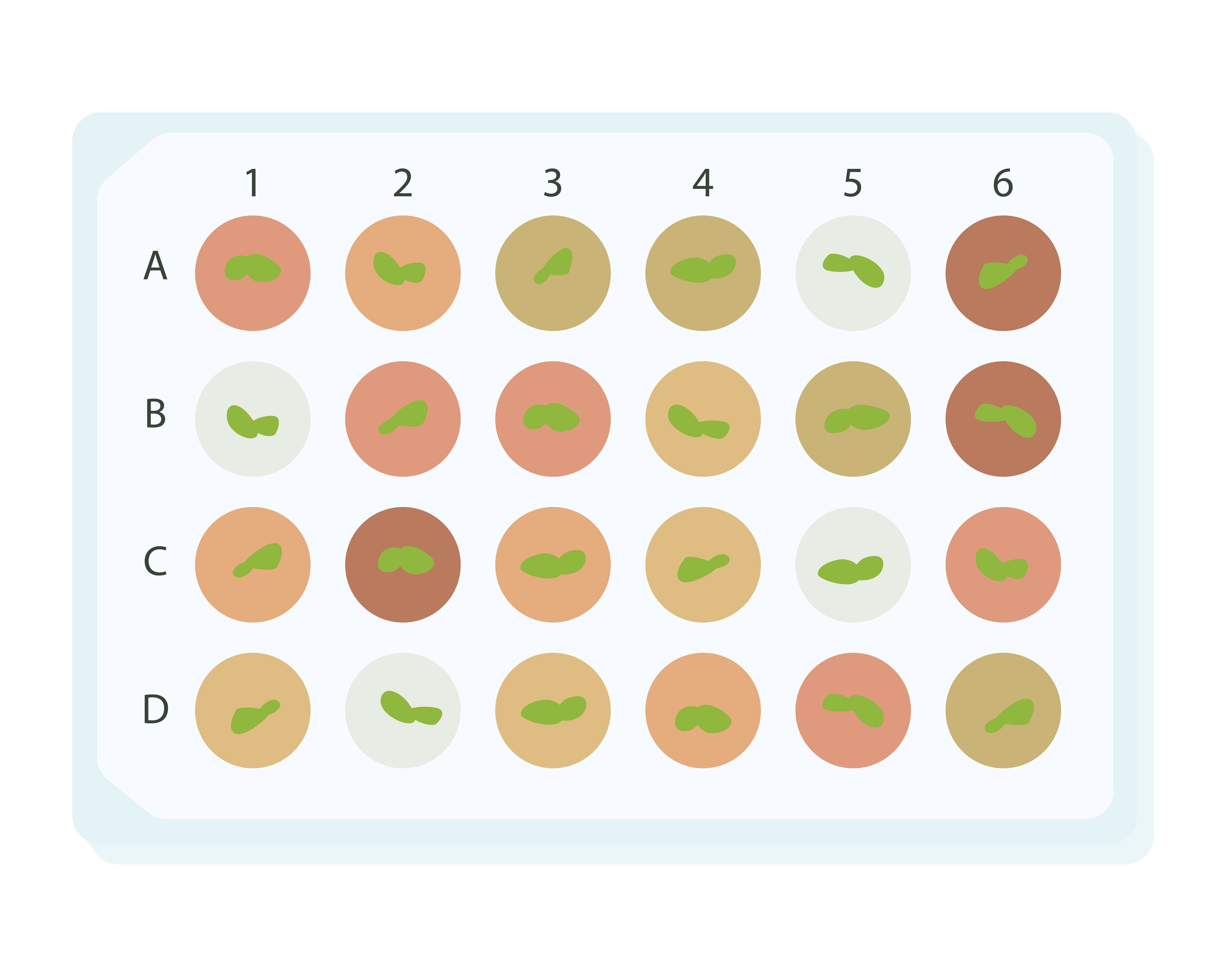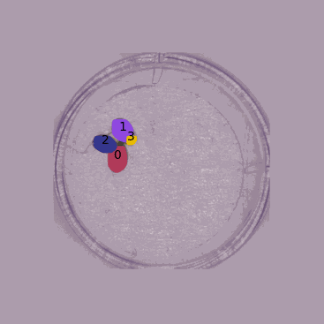What is duckweed?
Duckweeds such as Lemna minor are tiny aquatic plants that form symbiotic relationships with various microbes, many of which are beneficial. Their rapid growth and clonal reproduction make them an excellent experimental system.

Inspired by History
Inspired by History
The “father of microbiology,” Antonie van Leeuwenhoek, first observed microbes on the fronds of duckweeds in the 17th century.
A model for Host-microbiome Research
We are developing high-throughput tools and protocols for using duckweeds and their microbes as a model for studying interactions between hosts and their microbiomes. We sterilize duckweeds, inoculate them with new microbial cultures of our choosing, then compare growth of duckweeds and microbes across various treatment conditions.


Automated High-Throughput Experiments
Understanding the complex interactive effects of genome, microbiome, and environment on host fitness or performance requires massive multi-factorial experiments. To facilitate this, we are developing automated processes for setting up experiments, monitoring duckweed growth, and manipulating environmental conditions.
Collaborators
Collaborators











